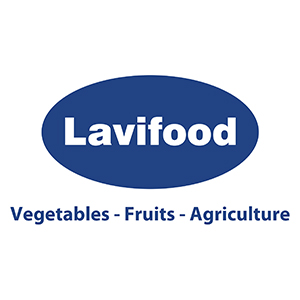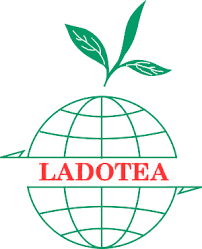- Giới thiệu
- Nhóm Công tác
- Tin tức
- Thông tin về FTA
- Tài Liệu
- Sự kiện
- Liên hệ
A review on the five years implementing Viet Nam’s agricultural restructuring
In the morning of November 10, Deputy Prime Minister Trinh Dinh Dung, Vice Chairman of the Commission for Economy, Central Committee Cao Duc Phat and Minister of Agriculture and Rural Development Nguyen Xuan Cuong chaired the Conference reviewing the 5-year implementation of the Plan to restructure the agricultural sector towards improving added value and sustainable development.

The Plan was approved by the Prime Minister in Decision No. 899/QD-TTg dated 10/6/2013. After 5 years of active implementation (2013-2018), the Ministry of Agriculture and Rural Development (MARD) affirms that the results are very impressive.
Strong growth in all areas
According to MARD, over the past five years, the agricultural restructuring has made remarkable changes in understanding and succeeded in unifying directive point of view from the central to local levels. The institutional and policy system for agriculture and rural development has continued to be renovated, becoming increasingly suitable and effective. In just 5 years, 7 laws in agriculture have been approved by the National Assembly. MARD has also reviewed and simplified 241 administrative procedures to promote agricultural and rural development. These mechanisms and policies have made great changes in the structure of production, agricultural and rural economy.
The results of developing enterprise investment in agriculture are among the illustrations of efforts made on institutional reform and improvement, especially in agriculture and rural areas. In 2017, there are 1,955 newly established enterprises, up 20% over the 3-year average for the 2014-2016 period. By September 2018, the country has over 49,600 enterprises engaging in manufacturing, processing and trading of agricultural products, accounting for 8% of total enterprises in the country, in which 8,635 enterprises directly produce agricultural products, which is 5 times higher than in 2012.
By September 2018, the country has 13,006 agricultural cooperatives and over 62,550 cooperative groups which were reorganized and newly established under the Law on Cooperatives in 2012. Household economy continues to be supported and organized in a larger scale. Farm economy is growing fast. By the end of 2017, the country has 35,542 farms, up 50.8% compared with 2012.
In recent years, there are more and more models of value-chain cooperation, linking production, preservation and processing in association with agricultural product consumption, which have brought about remarkable economic outcomes. Nation-wide, 1,029 chain models have been formed with 1,407 products in 3,162 locations selling products that meet standards on good production and food safety to meet market requirements.
The structure of the agricultural sector has shifted to bring into full play the country’s advantages, better align with market demand and adapt to climate change. In each sector and area, advantageous products with favorable market conditions have increased rapidly in terms of area, productivity, output, quality and contribution ratio to economic growth.
In crop production, in the past five years, about 200,000 hectares of inefficient rice production area have been converted into other crops with higher efficiency. At the same time, attention has been paid to crop structure, intensive production, disease prevention, application of science and technology to increase productivity, quality and reduce production costs.
The yield and quality of the main crops with higher comparative advantages have all increased sharply to meet increasing demand for domestic consumption and exports. After five years, added-value of crop production has increased by 7.8%; average income per hectare increased by 4.8%; fruit crops’ contribution to growth on crop production increased from 12% in 2012 to nearly 32% in 2017; High value industrial crops contributed 43% to growth on crop production, an increase of nearly 16%.
In industrial livestock production, high-tech applications thrive. There has been a significant improvement in breeding population. Many new breeds of high productivity, high quality, applying advanced technology have been put into production. After 5 years of restructure, the output of live meat has increased by 30%; poultry increased by 17%; pork and beef increased by 12.7%; goat and sheep meat increased by 14%; fresh milk increased by 47%; poultry eggs increased by 18.7%.
In the field of fisheries, attention has been placed on organizing production along the value chain, adopting good farming practices, ensuring food safety; reorganizing offshore production and enhancing the application of advanced seafood preservation techniques, which helps increase storing time from 7 days to over 20 days. In the past five years, total aquaculture production has increased from 5.92 million tons to 7.2 million tons. The growth rate of production value has reached 4.7% per year, added-value reaches 4.3% per year. Production value per hectare of water surface for aquaculture reaches 206.8 million tons in 2017, a 1.4 times increase compared to 2012.
Vietnamese agricultural products are exported all over the world
The market is decisive to the production structure, scale and the results of the implementation of agricultural restructuring. Therefore, MARD has actively cooperated with industry, trade and foreign affairs sectors to promote market expansion activities in parallel with improving the quality and competitiveness of agricultural exports; facilitating the negotiation process to remove technical barriers to trade; diversifying the market in order to stabilize the traditional and easy markets while expanding export to difficult, high-value markets like the US (lychee, longan, rambutan, dragon fruit, star apple), Australia (lychee, mango, citrus fruits), Japan (dragon fruit, chicken) ... to promote the development of the information system and market forecasts for agricultural products inside and outside the country, and foster the campaign "Vietnamese people use Vietnamese goods."
According to the report by MARD, Viet Nam's agricultural exports have risen to the 2nd place in Southeast Asia and 15th in the world. Competitiveness and position of Vietnamese agriculture have also improved.
Viet Nam's agro-forestry products are exported to nearly 200 countries and territories. Export turnover has increased sharply in recent years. In the 2013 – 2017 period, agricultural exports reached US$157.49 billion, averaging US$31.5 billion a year, an increase of 51.2% compared to the average exports in the previous 5-year period.
In 2018, agricultural exports is expected to reach US$40 billion; of which 10 commodities have export turnover of US$1 billion or more; and 5 commodities (shrimp, fruits, cashew nuts, coffee and wooden products) record export turnover of over US$3 billion.
The structure of export products has also been transformed. The ratio of processed, high quality and high added-value products has increased. For rice, high-quality rice amounts 80% of Viet Nam’s total rice exports, as such export price of Viet Nam rice is equal to (some time exceeds) export prices of the same type of Thailand.
The "bottlenecks" need to be addressed
Despite the impressive results mentioned above, according to MARD, after 5 years of restructuring, the agriculture sector still faces many risks and uncertainties.
While agricultural production capacity has rapidly improved, the consumption market remains unpredictable. The forecast of supply and demand is weak, so it is impossible to avoid "seasonality and devaluation" of agricultural products, affecting production, income and life of the people.
In addition, labor productivity of the agriculture sector, the quality and competitiveness of many agricultural products have been improved, yet remain low.
The renovation and development of organizational forms are slow. Household economy still accounts for a high proportion of the population and is showing limitations and weaknesses hampering the industrialization and modernization of the agriculture sector. Large scale value-chain production has not become mainstream.
Attraction of social resources to agriculture sector and rural areas is limited. The proportion of social investment in the sector only accounts for 5.8-6.0% of the country’s. Public-private-partnership investment is only at small-scale and/or on a pilot basis.
Tin liên quan
PSAV Attends the 30th Anniversary Celebration of Cargill Vietnam2025/10/23
Plant health management helps increase coffee yield up to 15%2025/10/16
An Giang to host 2025 OCOP forum for sustainable development2025/09/25
Viet Nam and France foster cooperation on blue economy and sustainable environment2025/09/29
Agriculture and Environment exhibition ready for National celebration2025/08/27



 Điều lệ hoạt động
Điều lệ hoạt động



















































